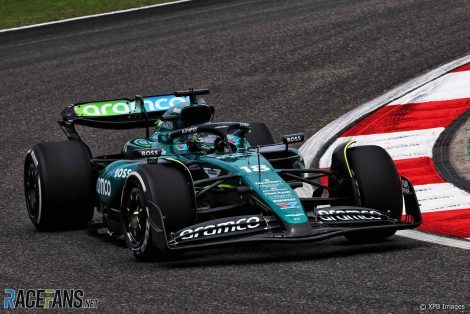Aston Martin did not have a successful Saturday in the stewards’ office at the Shanghai International Circuit.
First Fernando Alonso doubled his penalty points haul for colliding with Carlos Sainz Jnr. Then the team failed in their effort to move their other driver, Lance Stroll, up to 10th on the grid.
This case also involved Sainz, and revolved around his crash which brought Q2 to a temporary halt. Sainz was stopped at the track for over a minute before driving off under his own power and resuming the session. He reached Q3 at the expense of Stroll.
Wielding article 39.6 of the Sporting Regulations, which states a “driver whose car stops on the track during the qualifying session… will not be permitted to take any further part”, Aston Martin attempted to have Sainz penalised.
Drivers have been retroactively removed from qualifying stages in the past. At Austria in 2022 Sergio Perez lost all his lap times from Q3 when the stewards ruled he should have had a lap time deleted for a track limits infringement in Q2.
Aston Martin’s case rested on two points. One was that race control themselves had noted Sainz “stopped” during the session in a message on the official timing system. The message appeared 55 seconds after Sainz’s car came to a stop, while it was still stationary. Sainz pulled away 22 seconds later.
However, the stewards said “race control clarified that the language was standard language used in the system and therefore did not convey what Aston was suggesting.”
Advert | Become a RaceFans supporter and
Aston Martin’s second argument was that Sainz spent too long stationary to be allowed to resume. The Ferrari sat by the barrier for one minute and 17 seconds.
The rule forbidding drivers from rejoining qualifying sessions after stopping has been in place for many years. However F1 cars have only relatively recently become able to sit stationary for long periods of time and pull away without outside assistance.
This change began once F1 cars became able to start themselves. F1 manufacturers gave their power units self-starting capability after the current engine regulations were introduced in 2014.
As a result, drivers are increasingly pulling away under their own steam after lengthy stoppages, as is often seen at the pit lane exit when qualifying sessions begin. This has prompted some debate over whether article 39.6 should be revised.
The stewards’ verdict revealed the teams,…
Click Here to Read the Full Original Article at RaceFans…

